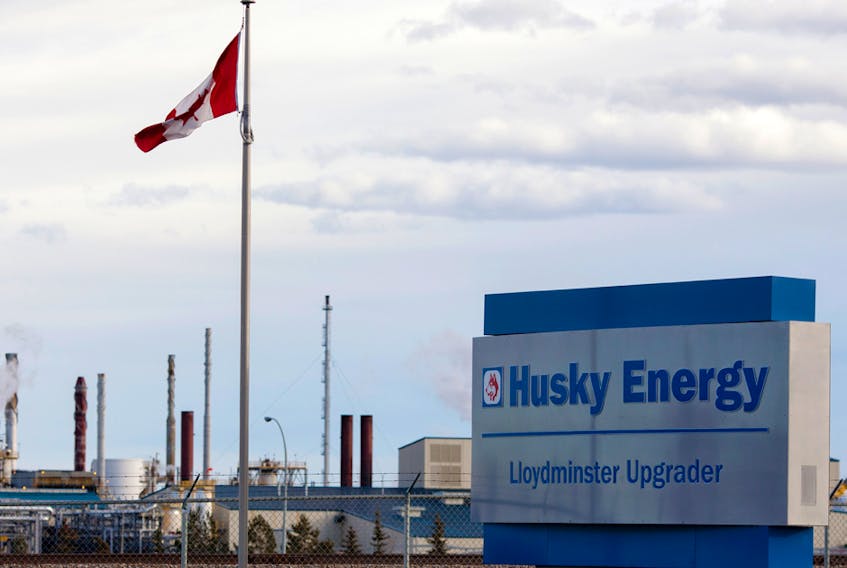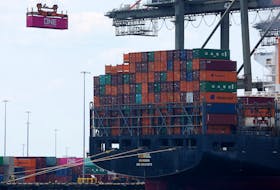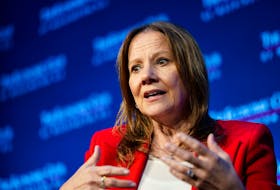CALGARY, Alta. – Husky Energy Inc. is on pace to spend $350 million less in each of the next five years while still boosting its oil and gas production, highlighting efforts by the the Canadian energy sector to cut costs and make itself more attractive to the investor community.
“Oil and gas and energy is pretty unloved. You could almost say Canada is fairly unloved in the investment industry globally, and Canadian oil and gas is really quite unloved by the investment community,” Husky president and CEO Rob Peabody said Tuesday during an investor day event in Toronto.
Canadian energy companies have trouble setting up meetings with major investors to drum up interest, said Peabody, adding there was a “disconnect” between investors and energy companies as costs have fallen dramatically but investor interest has not returned.
Husky said it will spend $1.7 billion less in planned spending over the next five years, while also increasing its oil and gas production by 100,000 barrels per day.
“Competitive intensity has dropped. We don’t face cost pressure that we see in other parts of the industry and other parts of the world where things are much more active,” Peabody said, referring to the number of companies that have exited the Canadian heavy oil business.
Husky is forecasting “materially lower capital spending” over the next five years than previously planned and therefore cash flow of $3 billion in 2023, compared with previous forecasts of $1.4 billion in 2022, BMO Capital Markets analyst Randy Ollenberger said in a research note.
“The biggest driver in the reduction of our upstream operating costs has been the transformation of the asset base,” Husky spokesperson Mel Duvall said in an email, adding the company had sold off its “higher cost” conventional assets in recent years and pared back work at other high-cost facilities.
“We’ve been replacing that production primarily with thermal bitumen projects – the series of 10,000 barrels per day thermals we’ve been building in the Lloydminster region,” Duvall said, adding those projects have operating costs around US$10 per barrel.
A Husky investor presentation showed that in 2014, its supply costs for oil projects were close to US$100 per barrel. Today, those same costs are in the US$50 range.
Other Canadian companies are also reining in spending.
For example, Suncor Energy Inc.’s natural gas consumption costs have dropped to $2.30 per barrel in 2018 from $6.50 per barrel in 2014. At the same time, Suncor, like many of its competitors, is also using less steam to produce oil from its facilities, said BMO Capital Markets analyst Jared Dziuba.
“We have seen a fairly significant decrease in core operating costs in the sector and in other costs as well,” Dziuba said.
Despite the industry’s improved fiscal situation, he acknowledged that many international investors have not returned to the sector. “This is not something that’s believed by investors outside of Canada,” he said. “Investors, at some point, can’t ignore the levels of free cash flow that these companies like Suncor and Canadian Natural (Resources Ltd.) are generating right now.”
The S&P/TSX Capped Energy Index was up six per cent for the year, trailing the broad S&P/TSX Capped Composite Index’s 14.13 per cent, even though oil prices are at an elevated level.
Calgary-based investment firm Peters & Co. raised its cash flow forecast for large and integrated Canadian firms by 36 per cent to $23 billion, while expecting capital spending to remain flat at around $16 billion, according to a report earlier this month.
IHS Markit echoes the sentiment, noting in a report earlier this month that oilsands operating costs have been cut by almost half since 2014.
“In many respects, concerns over oilsands costs are based on a historical reputation for being ‘high cost’ – a by-product of rapid investment that preceded the oil price collapse of 2014-2015,” the report noted.
Average operating costs at steam-based oilsands projects ranged between US$15 and US$20 per barrel in 2014 but those costs have dropped to an average of less than US$10 per barrel and the lowest-cost operations run at US$5 per barrel, the IHS report noted.
Capital costs are also down. Between companies re-engineering their projects to cut costs and general deflation in the market, “the cost of a new oilsands project may be anywhere from 25 per cent to a full third cheaper than in 2014.”
• Email: [email protected] | Twitter: geoffreymorgan
Copyright Postmedia Network Inc., 2019









